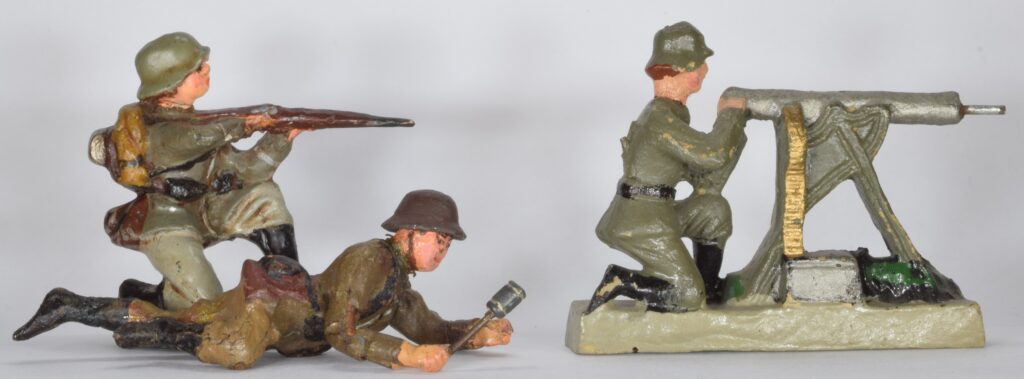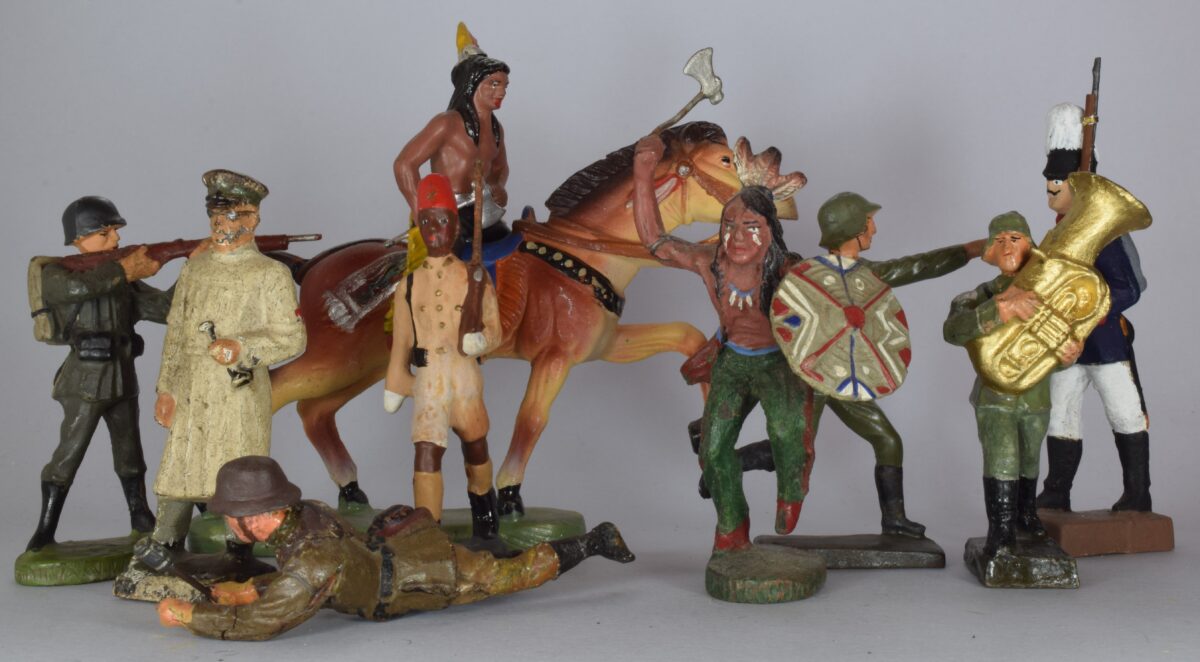Composition figures are made of a mixture of sawdust, glue, kaolin and cassein (Joplin). This mixture was put in a mold around a wire armature. The figures were sold painted.
Elastolin
Elastolin was a German company from Stuttgart that produced figures since 1926.
German Army
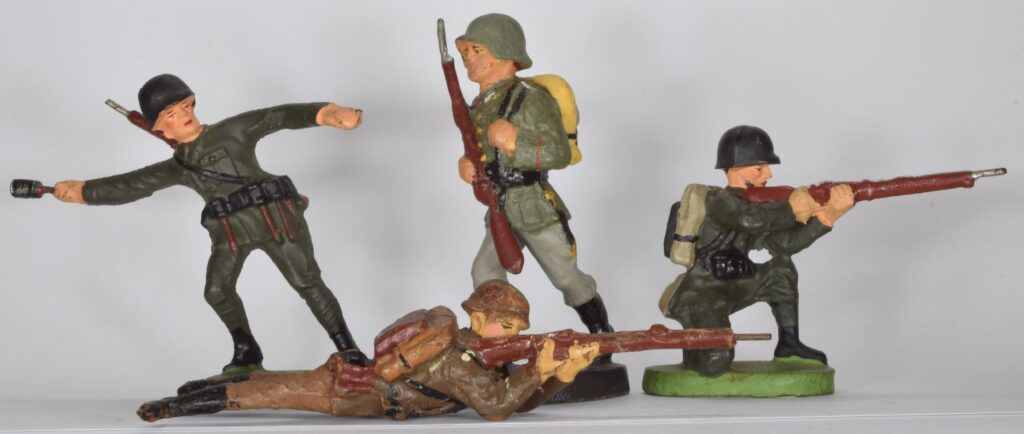
Most of figures produced by Elastolin represent soldiers from the German Army. These figures are from the common size of aprox. 65mm.

These two figures are smaller at about 55mm height. Notice that the gun barrel is made from the armature wire.
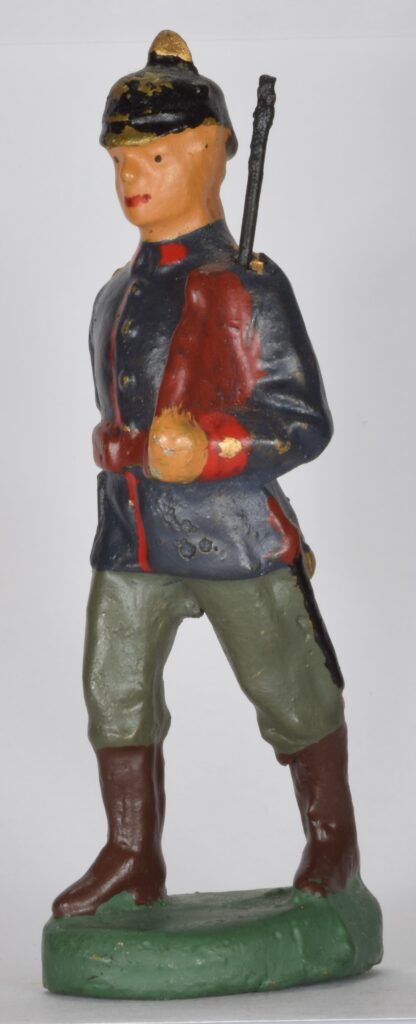
This soldier is of the large type at 90mm height. It could be a soldier of the beginner of the XX century.

German Army soldiers with a flag bearer. The soldier throwing the hand grenade gives a image of determination and the uniform is very well modeled.
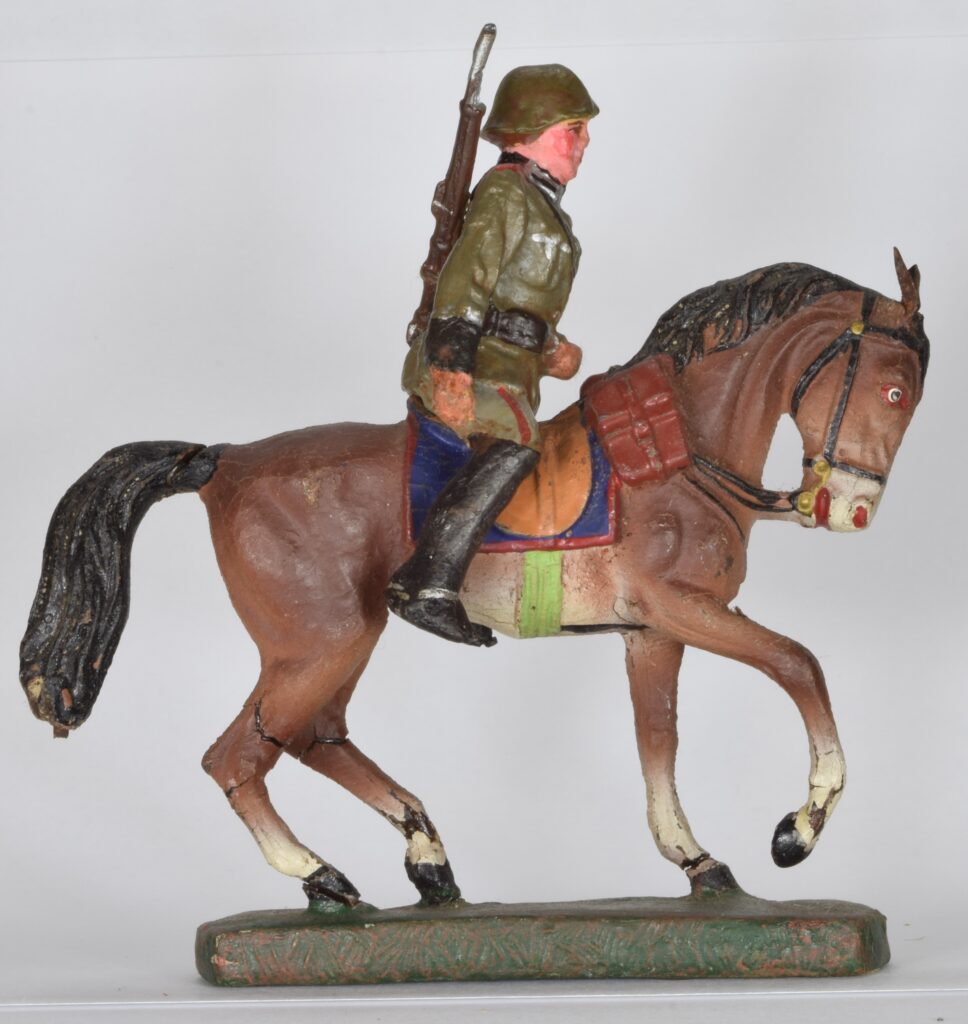
Even if cavalry was almost completely substituted by motor vehicles there were a few horse in the German Army. One major problem with this figures is the cracking of legs. To try to cope with this problem I put a bit of white glue (wood glue) in the fissures.

Machine guns were a terrifying weapon in WWI. The front legs of this machine gun are made of metal.

These group of soldiers include an official with a sword. Bases are different both in colour and in the way the name “Elastolin” is written, relating to different periods of production.
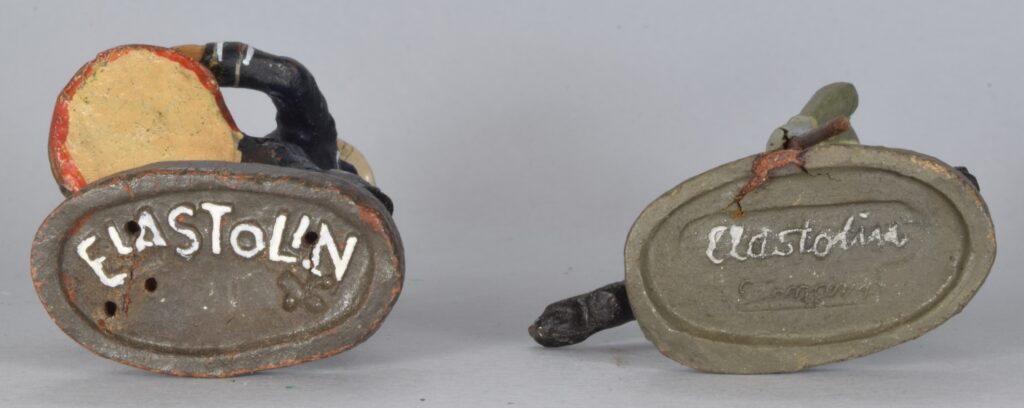
The two types of Elastolin marks
French Army
Figures representing the French Army are easily recognisable due to the characteristic Adrien helmet with a median crest.
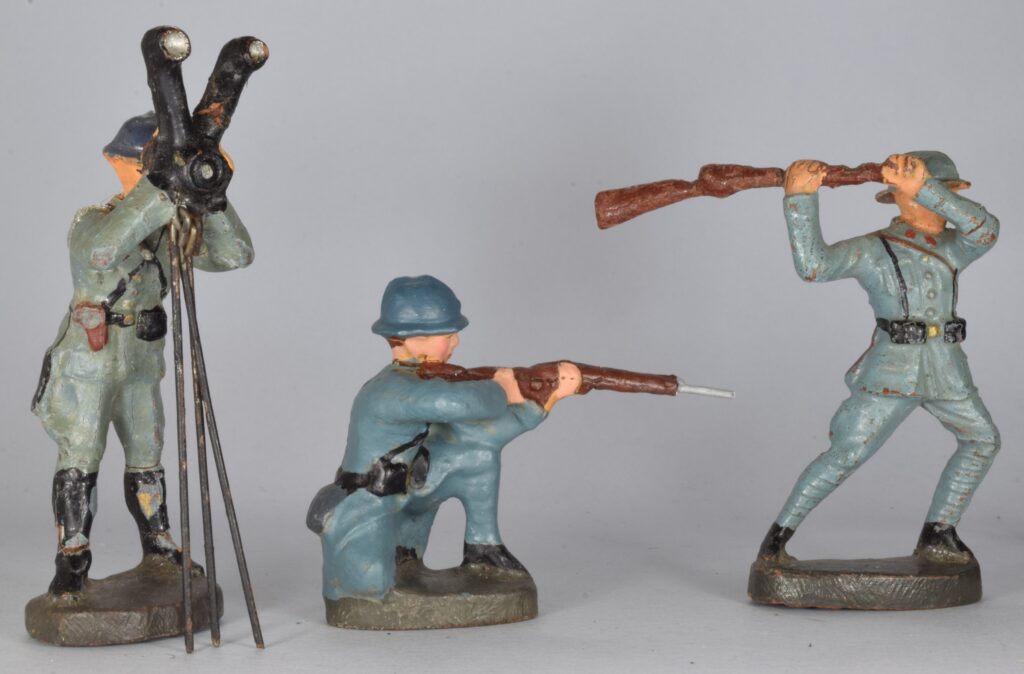
The first soldier is looking through a periscope used in the trench warfare during WW I. Using a rifle as a club is a common pose in toy-soldier making albeit not very realistic one.
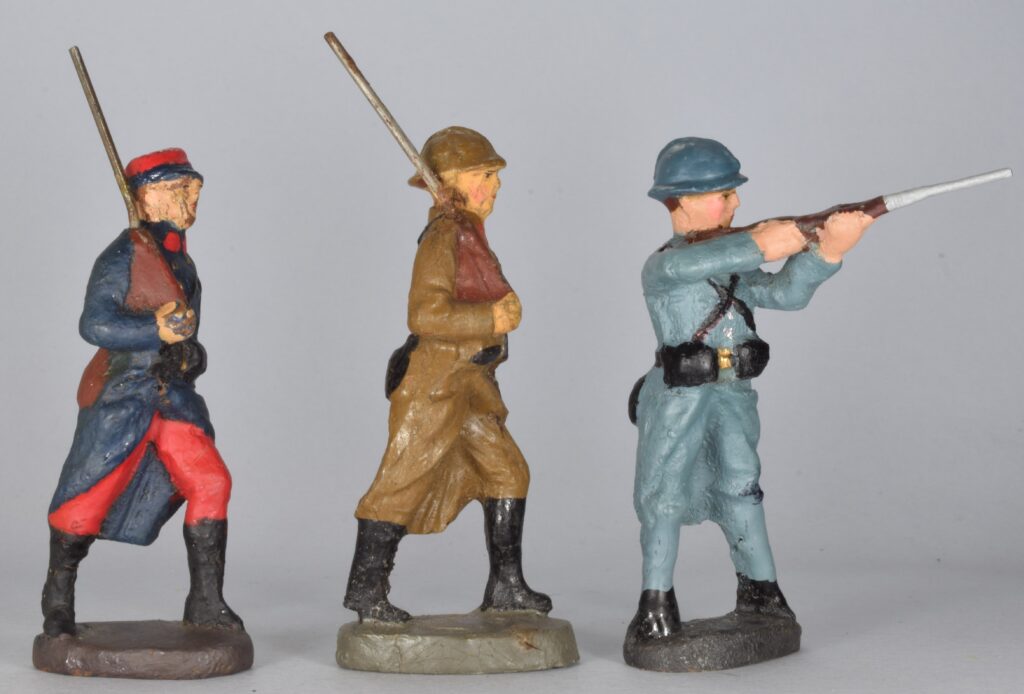
These figures show three different uniforms used by the French Army. The first one relates to the first days of WW I when red trousers were still common.
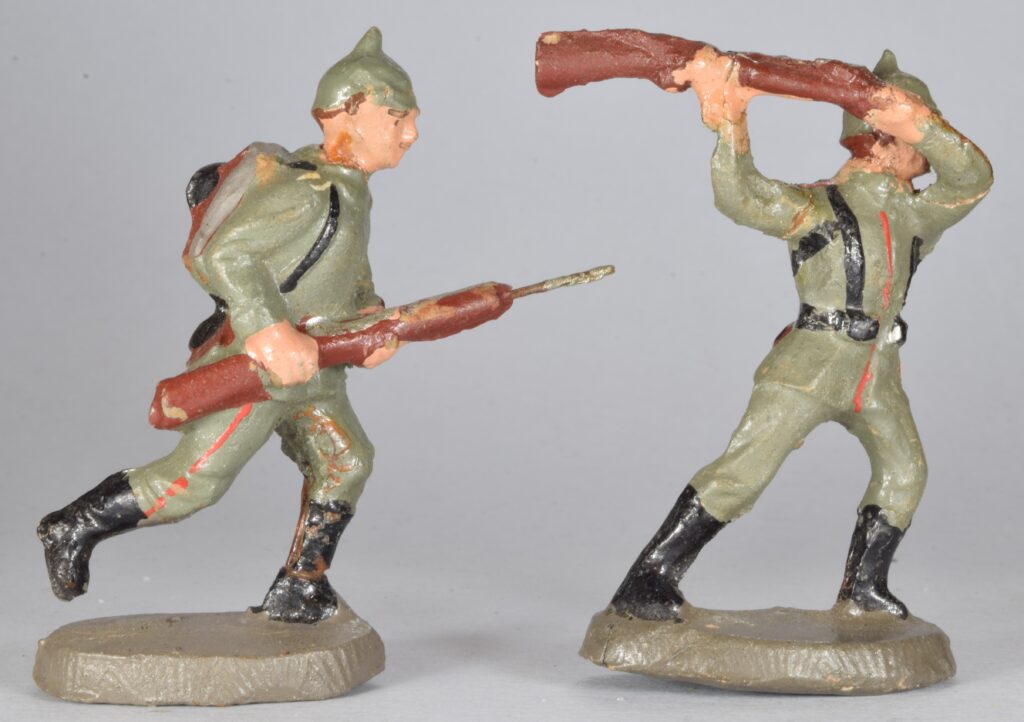
These soldiers show the type of German helmet from WWI. They are of small size than other Elastolin production, only 45mm from base to eye.

These figures were painted in a colour and had an head gear that suggests they belong to Russian army of WWI.

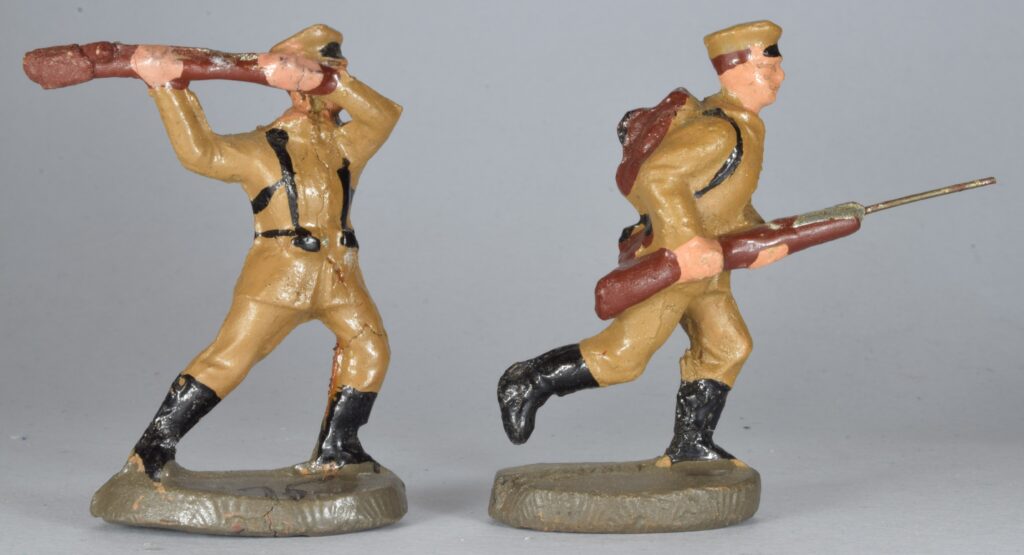
Bibliography: Mirouze, Laurent (1990). World War I Infantry in colour photographs. Europa Militaria nº 3. Window &Greene, London. 66 p.
Far West by Elastolin
Elastolin made also some figures with the Far West theme
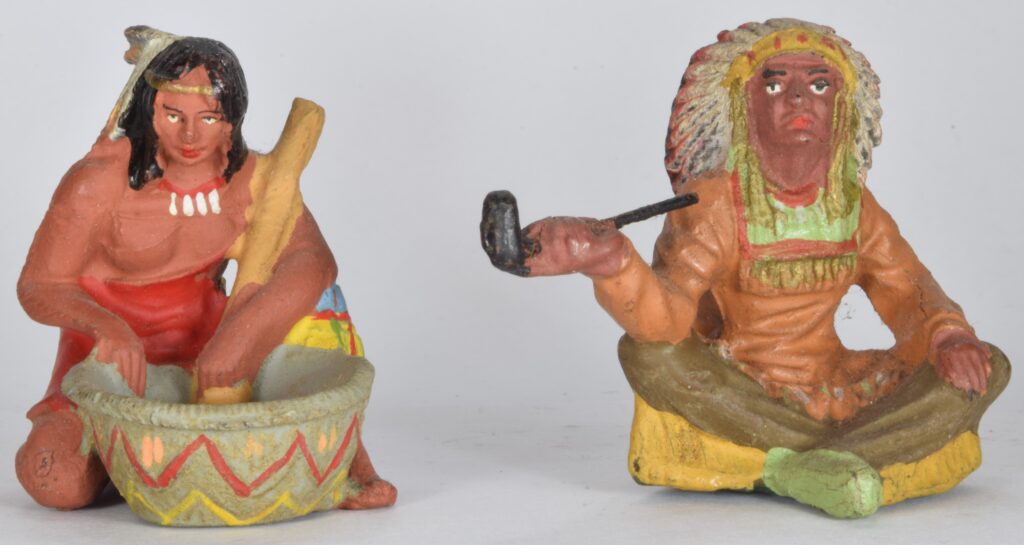
A calm picture but not politically correct; the woman works while the man smokes a pipe.
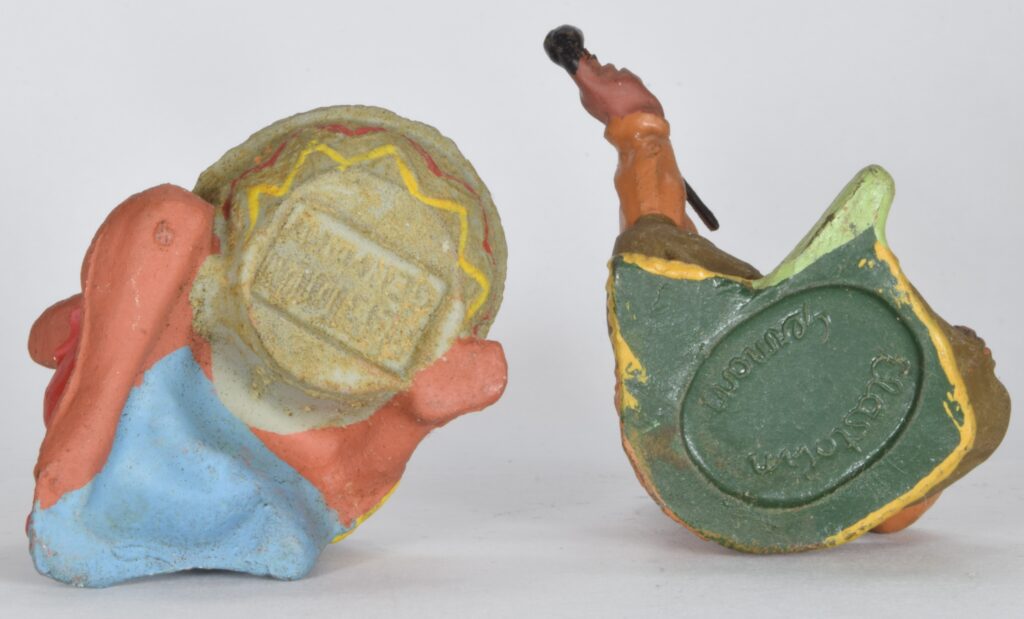
The bases of figures show different engravings.

Two Indian figures very nicely sculped with some tension.
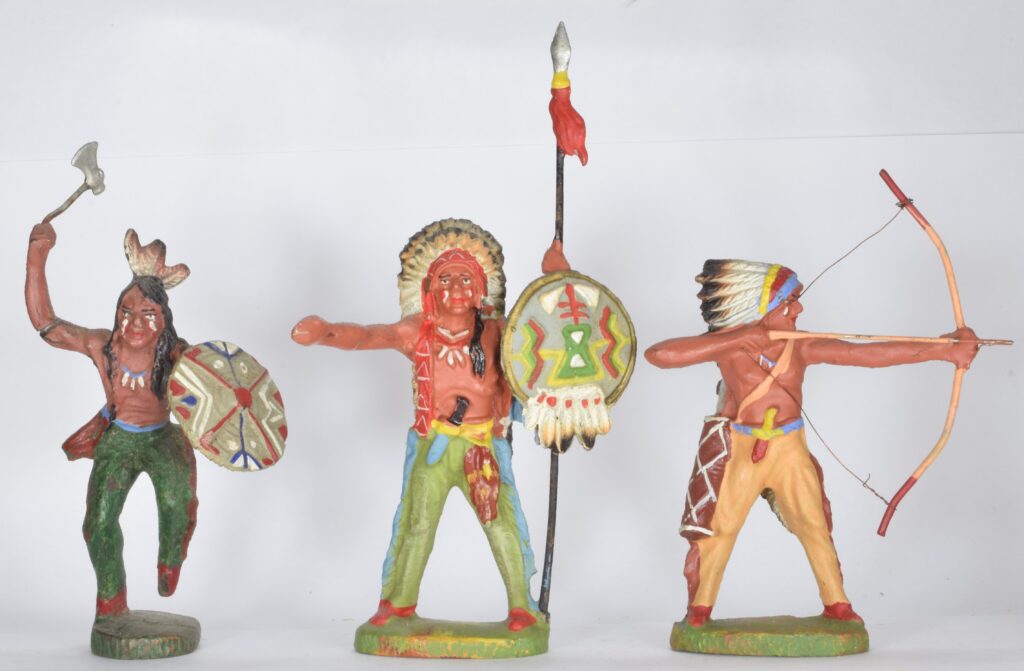
Some very nicely done Indians. Very good painting job both in the feathers and in the decorated shields. The anatomy as always is very well done.
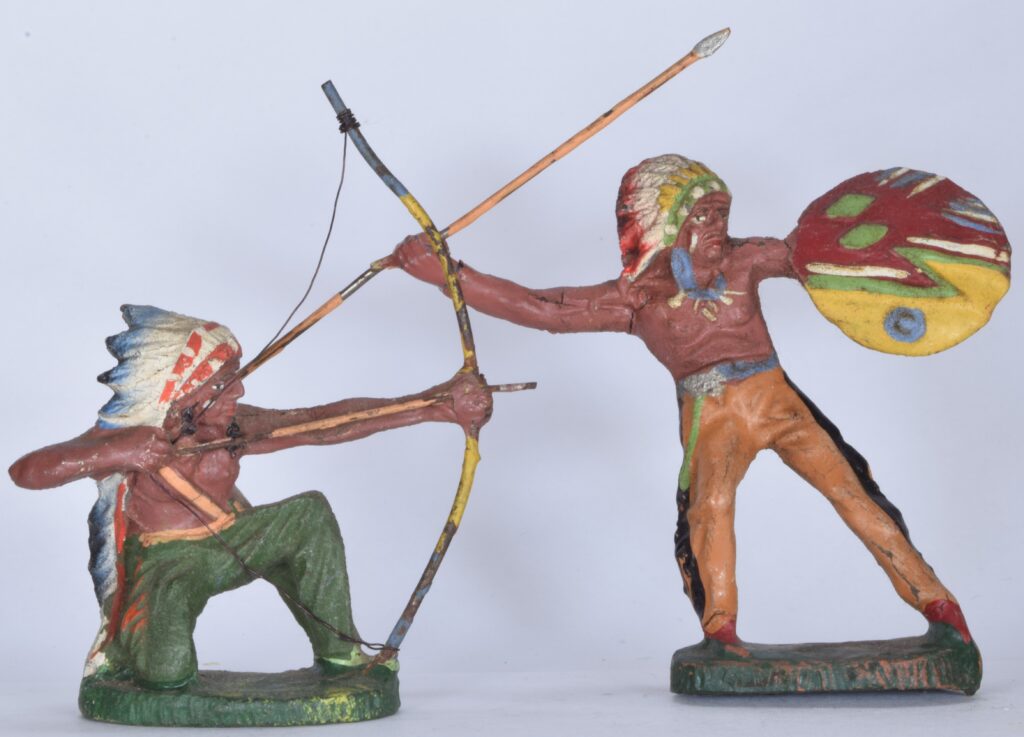
Two more braves full of action. Notice the subtle painting work on the feathers. The shield is nicely decorated.
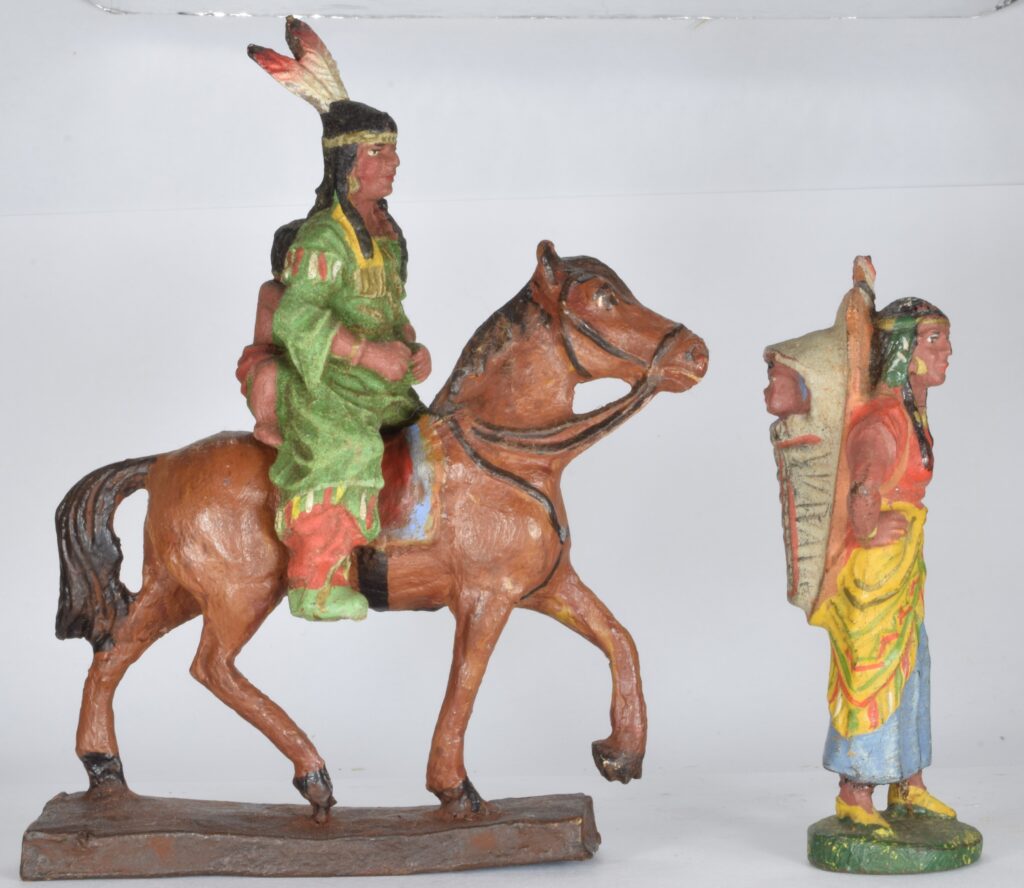
It is interesting to notice that women figures were also made. These carry their sons.
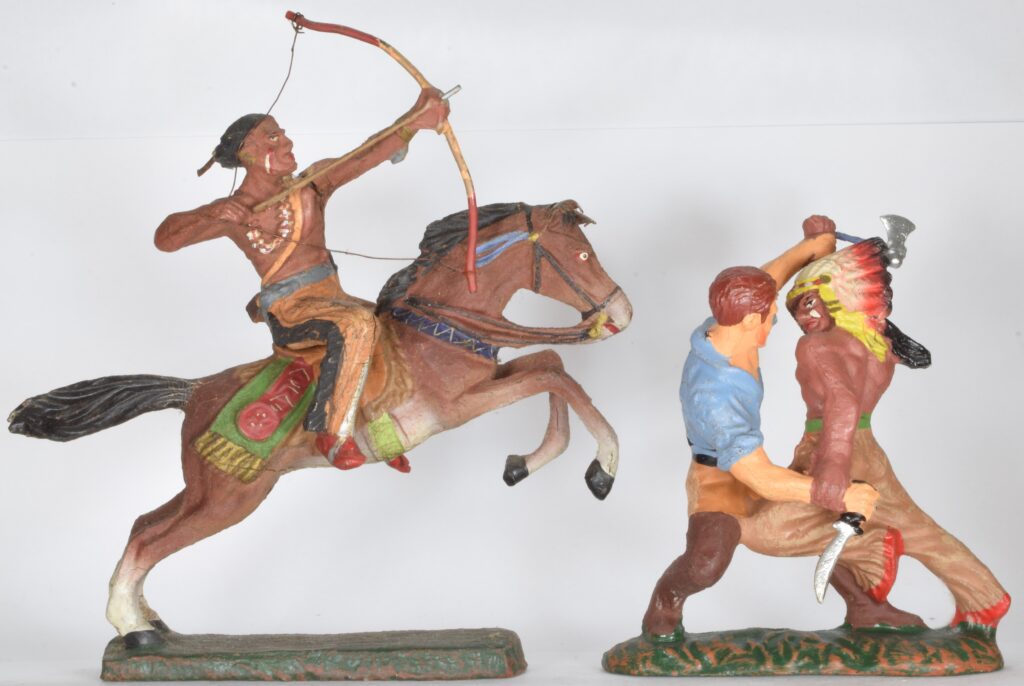
Very dynamic poses. The couple fighting is one of best ever produced with this type of material IMHO.
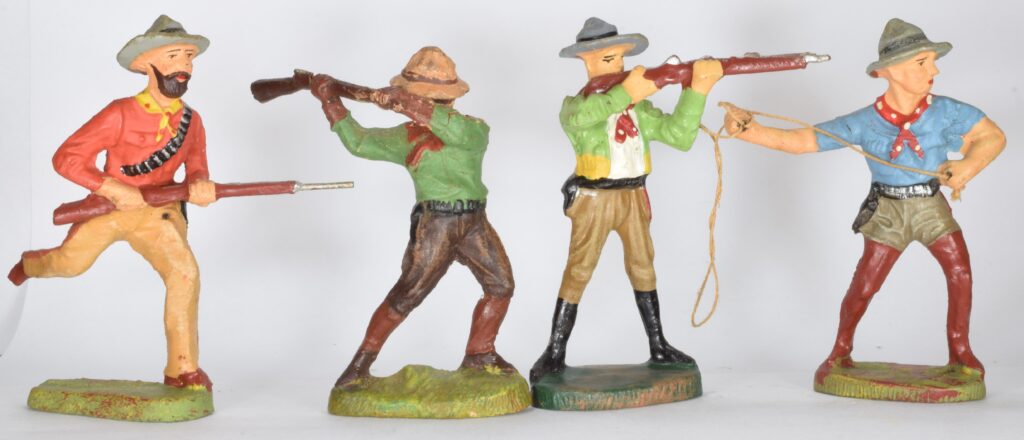
Now the cowboys also very active.
Leyla
Leyla is German company that produced composition figures from the II World War and Far West.
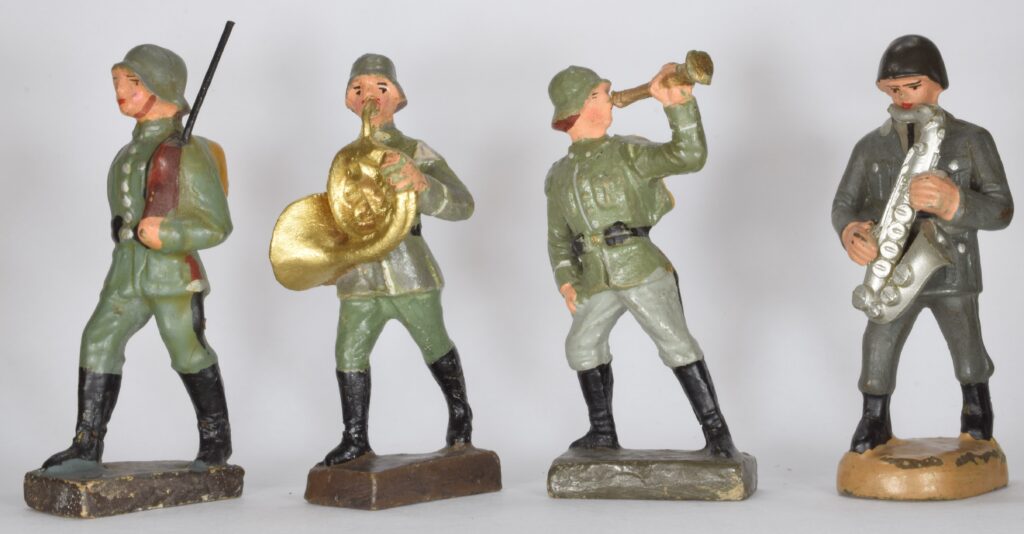
These are common poses. The instrument of the last figure is made of plastic.
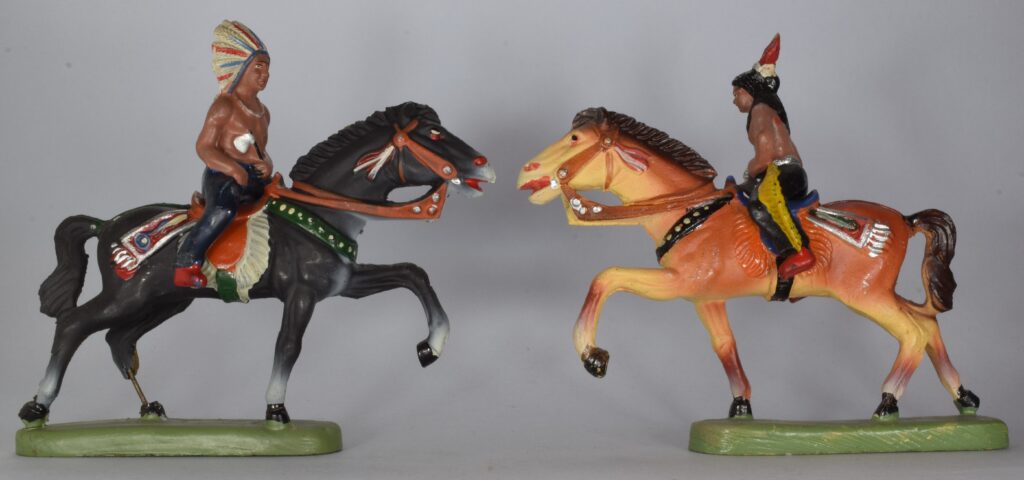
Riders are separate from horses and those are very large.
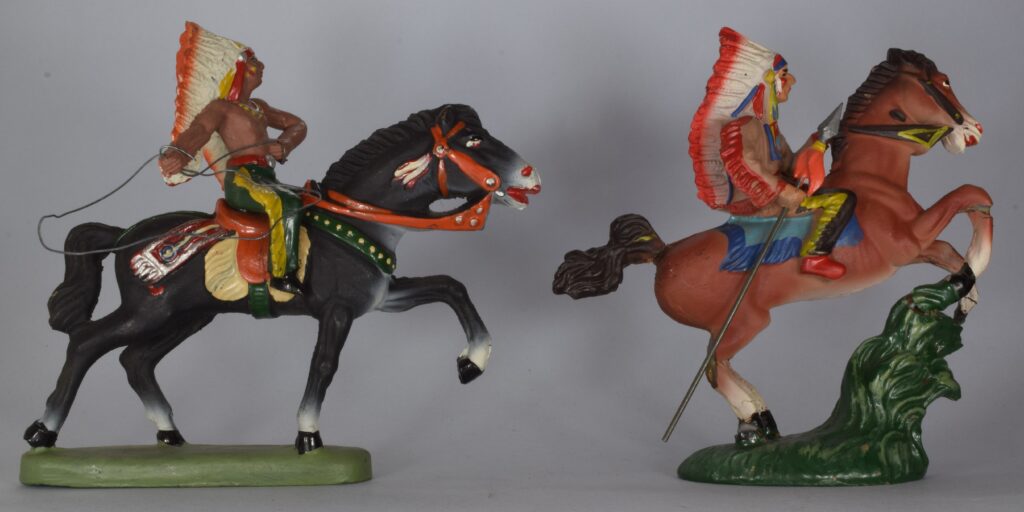
The first figure has a wire to mimic a rope.
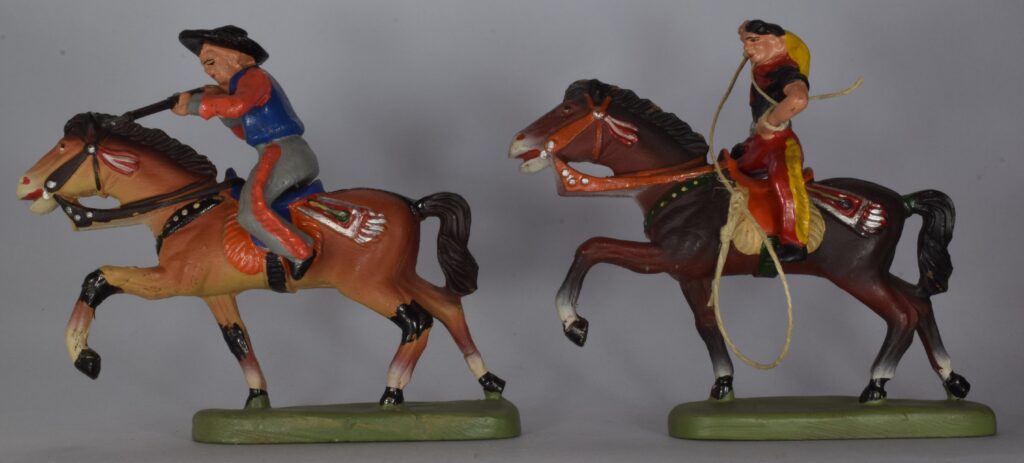
The cowboy´s horses are similar the Indian ones.
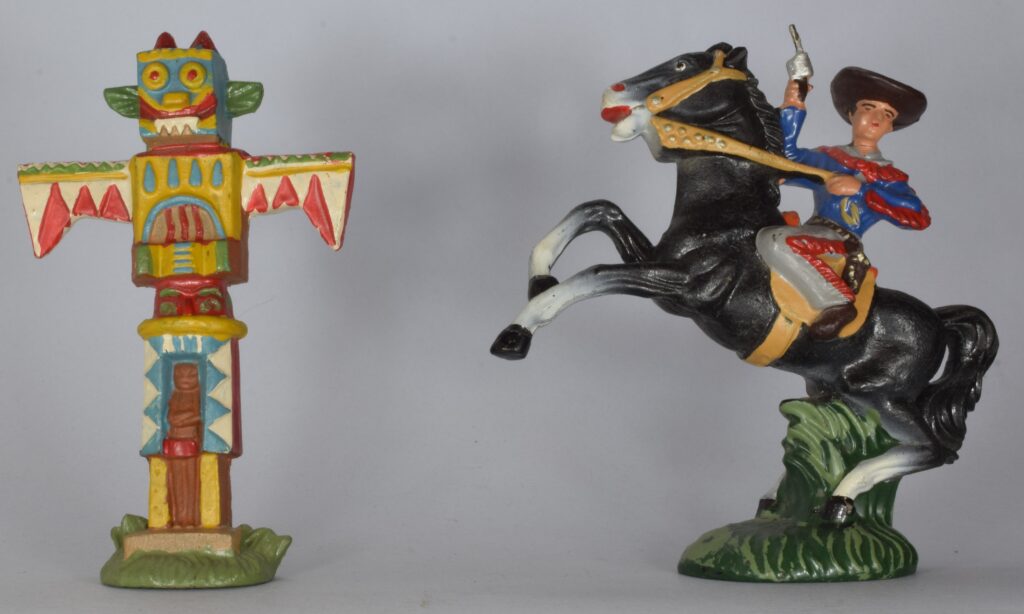
A totem pole is always a nice addiction to a Indian village. In this case the cowboy and horse are a single piece.
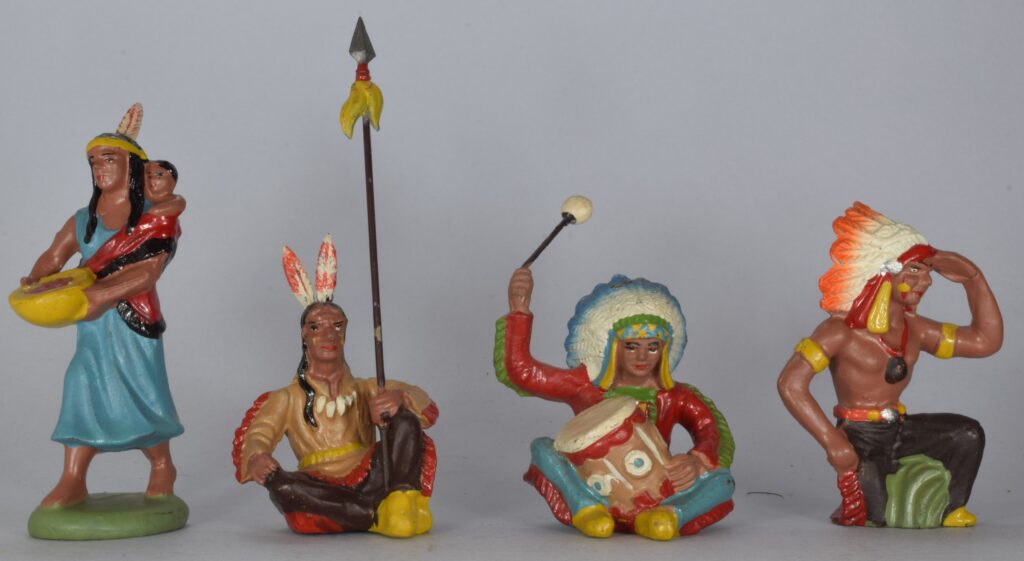
Indian figures are nicely done and are in good condition which is rare with this type of material.
Lineol
Lineol is one of the most famous German company that produced composition figures.

This figure, albeit being from Lineol, is very interesting because the base is not a square or a rectangle, which are the characteristic shapes of Lineol bases. However the name is engraved under the base.
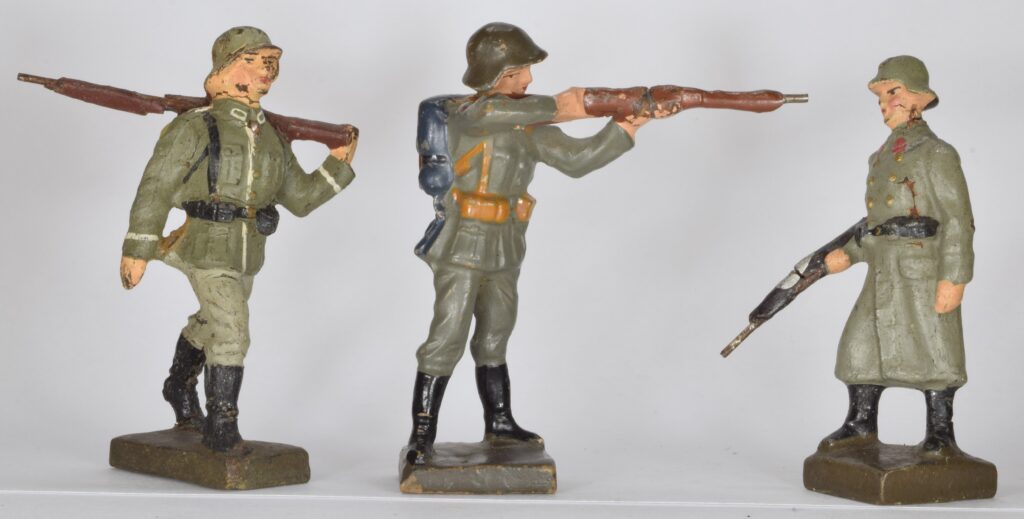
Three different figures with various painting types. Notice the inferior size of the third figure.
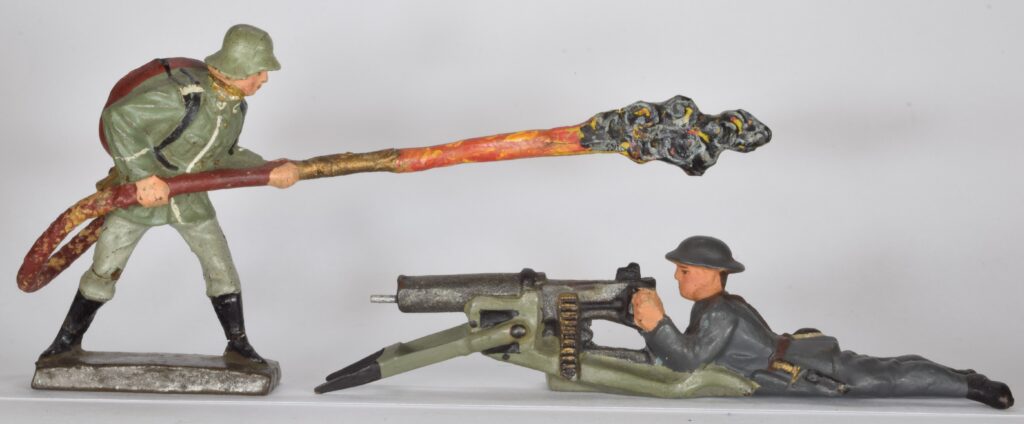
A German flamethrower and, probably, a Portuguese machine-gunner. Lineol produced figures representing various armies.

This three figures have very static poses. Portuguese uniforms in WWI were of grey colour. It could be a marketing strategy from Lineol to send to Portugal figures painted in grey.
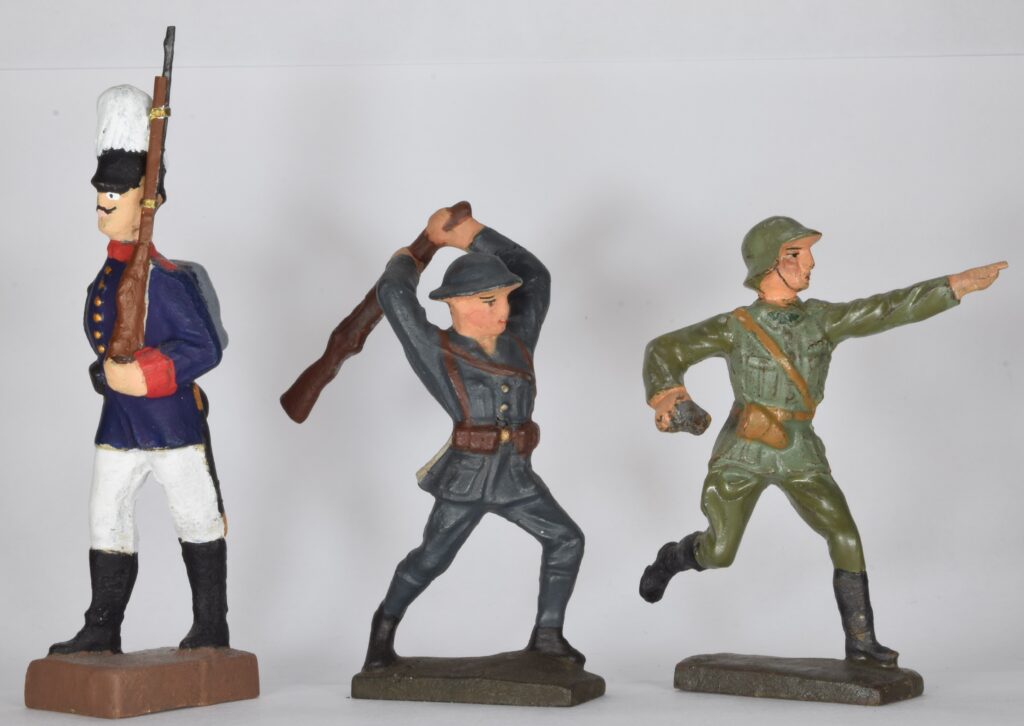
The first figure was painted by me because it was in terrible condition. My excuses to the purists. The other two are very dynamic and in good condition.

These figures represent Allied armies. The first, brown uniform, is probably British. The other three figures show the Adrien helmet and could be from the French army. As is most common with this figures the rifles are reduced to the wire. Notice the sword of the officer.
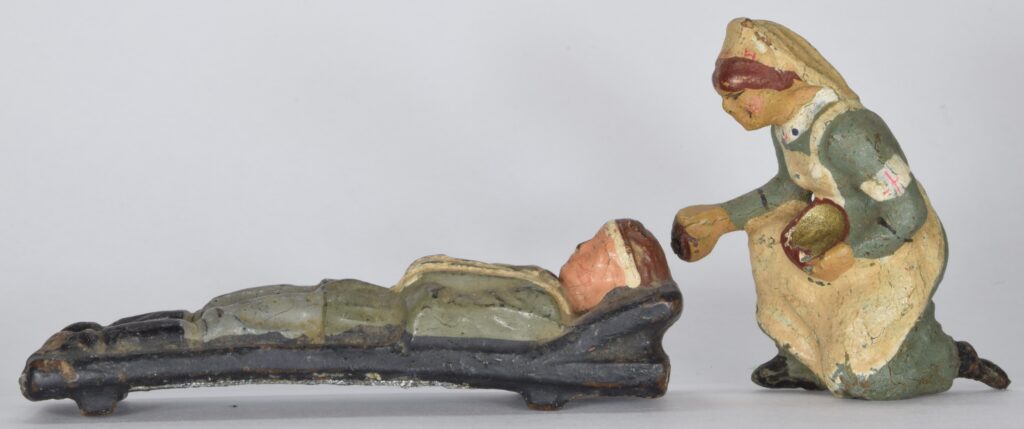
Some figures show the tragic consequences of war like this casualty and the nurse attending to him.
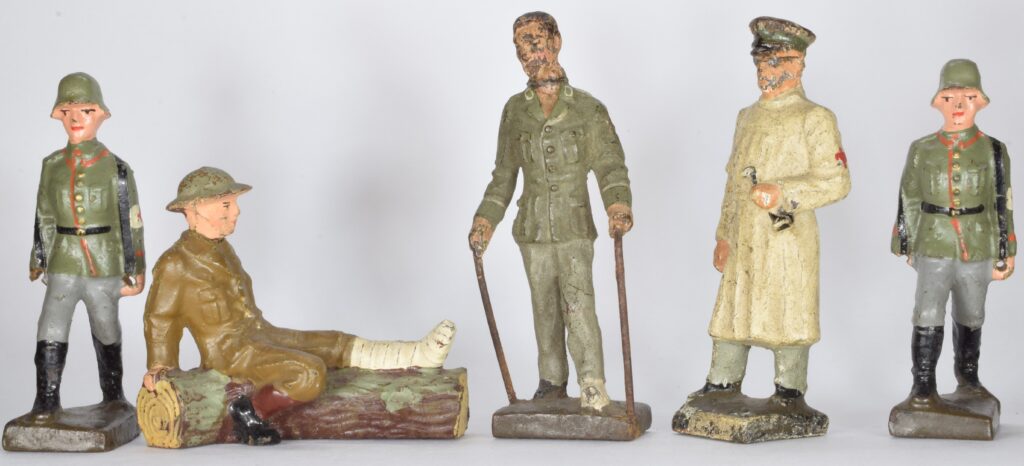
The theme of casualties continues with two examples in the company of a Doctor and two stretcher bearers.
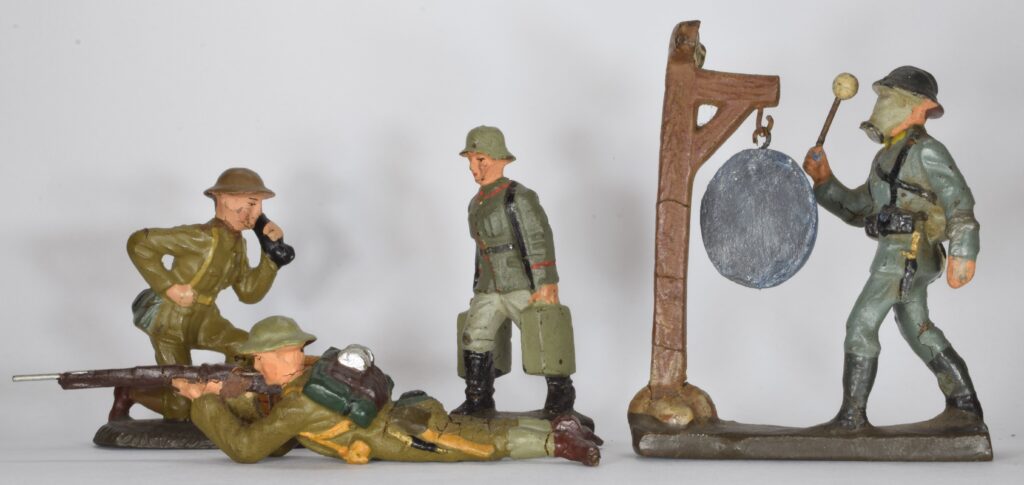
A radio operator and a prone shooter represent the British army. The soldier without base as the name “Lineol” engraved on one leg and “Germany” on the other. The use of toxic gases as weapons, was one of the most terrible occurrences during WWI. The soldier on the right is making noise with a kind of “gong” to alert fellow soldiers of a gas attack
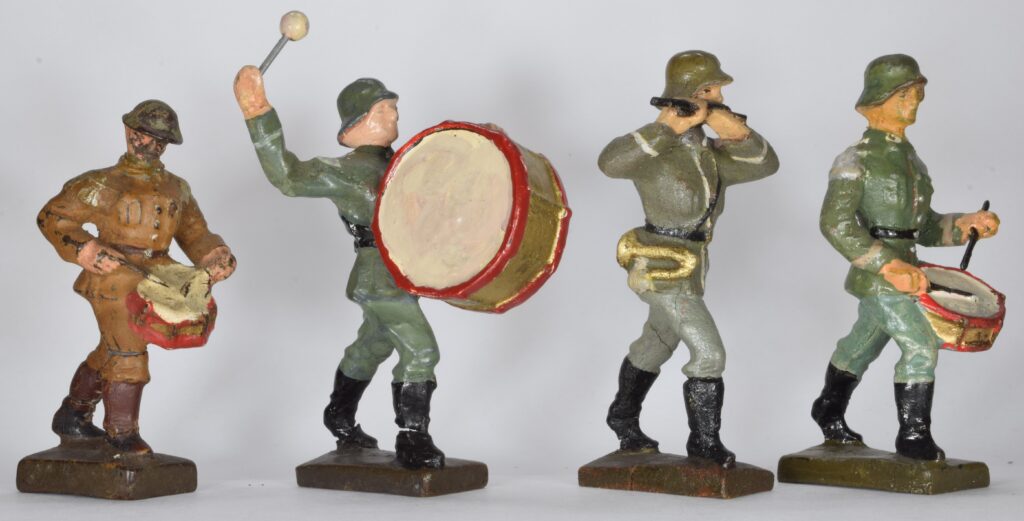
Military musicians are, also, a very popular theme for these kind of figures.
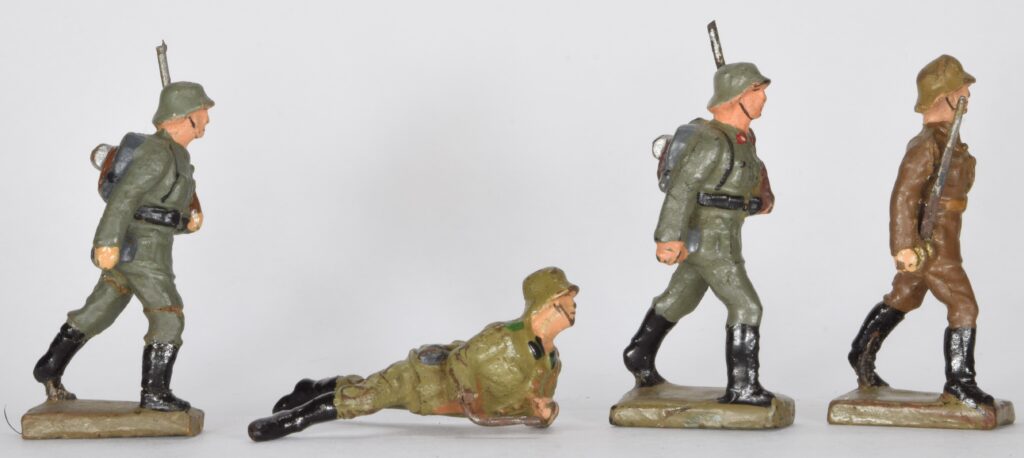
Lineol also made small figures approximately 35mm height.
Other makers
Composition figures were make by many other companies. Some examples of my collection are shown here.
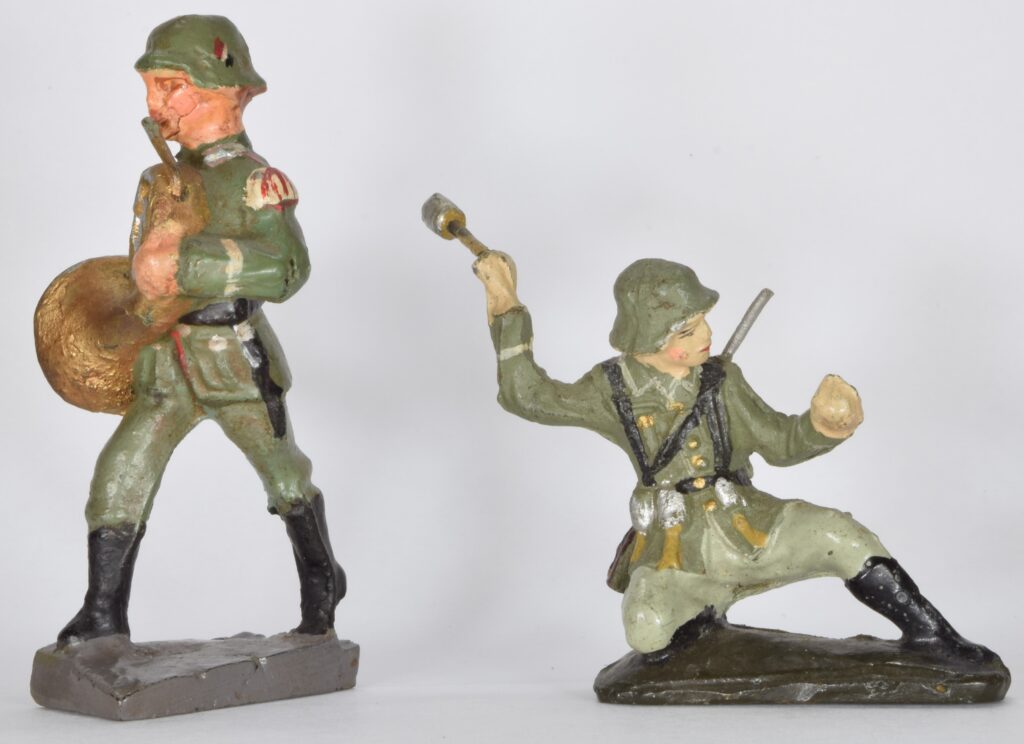
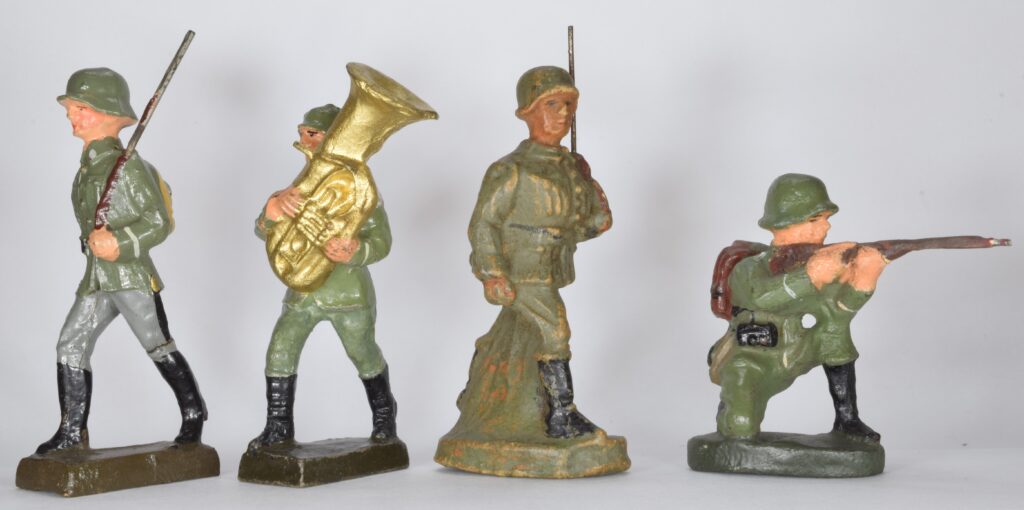

Figures of Lisanto and Kresge makers.
Unidentified figures
One of the pleasures of collecting toy soldiers is also to try to identify the figures that we get. These figures have no name (U2).
